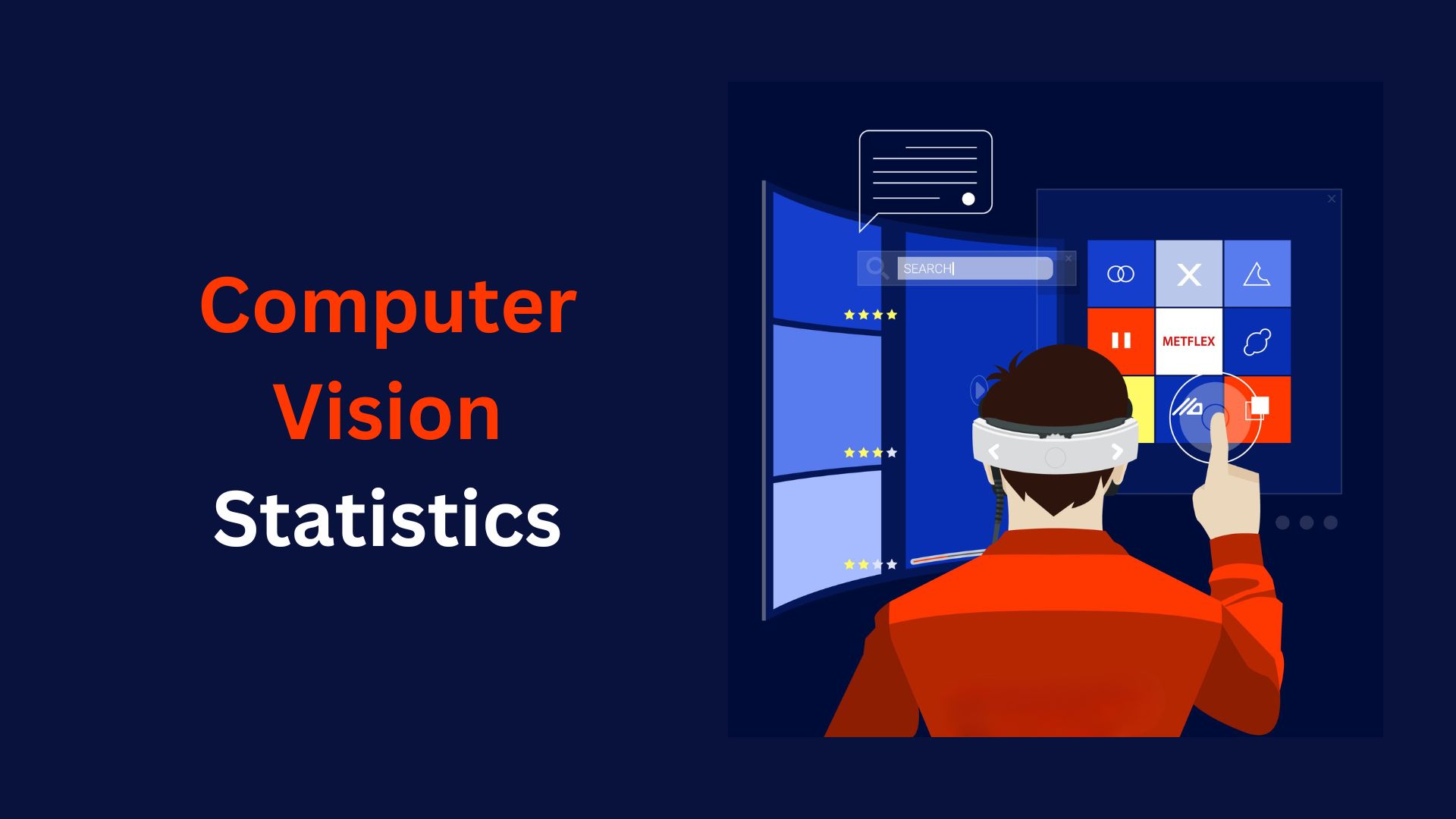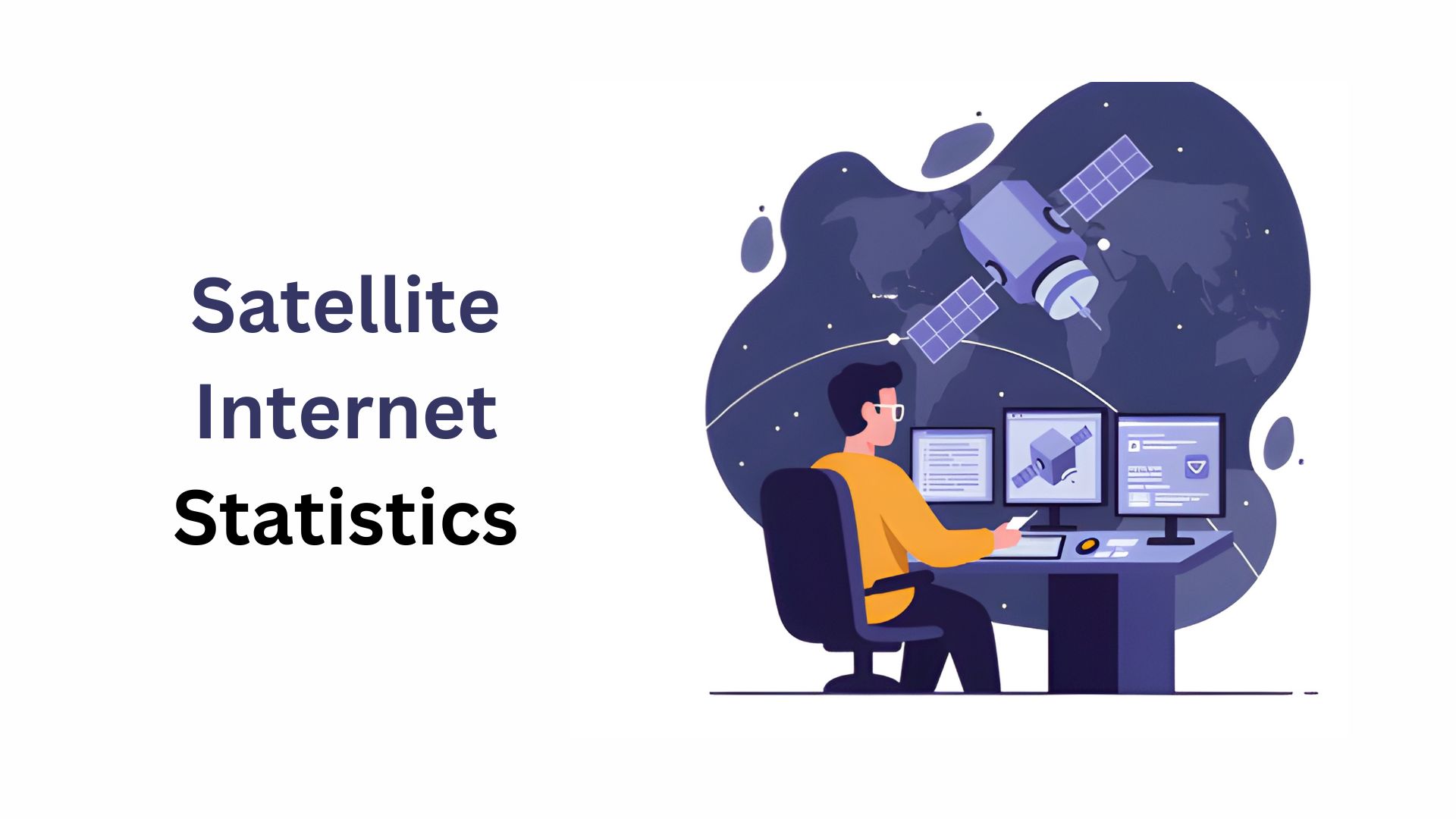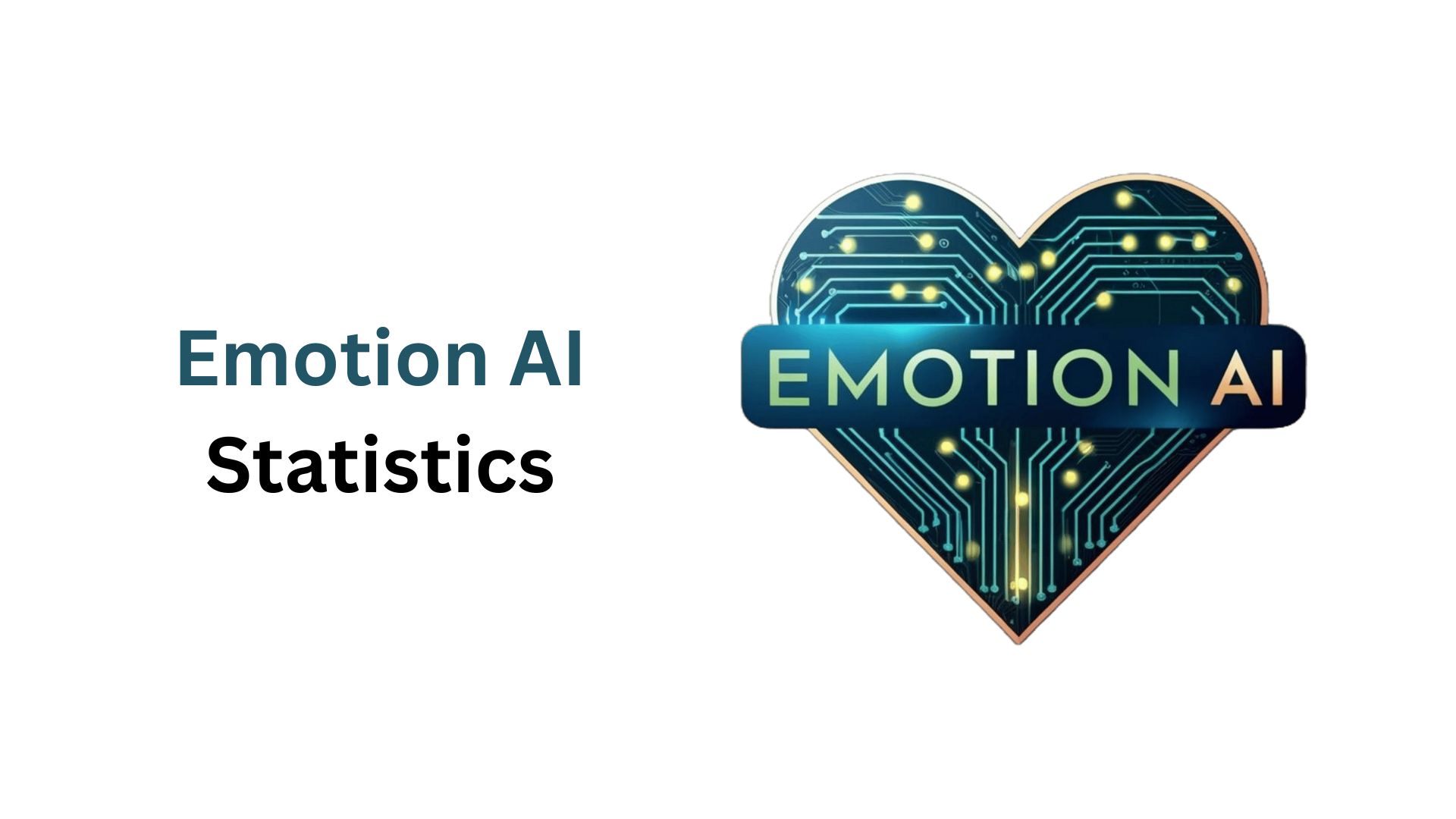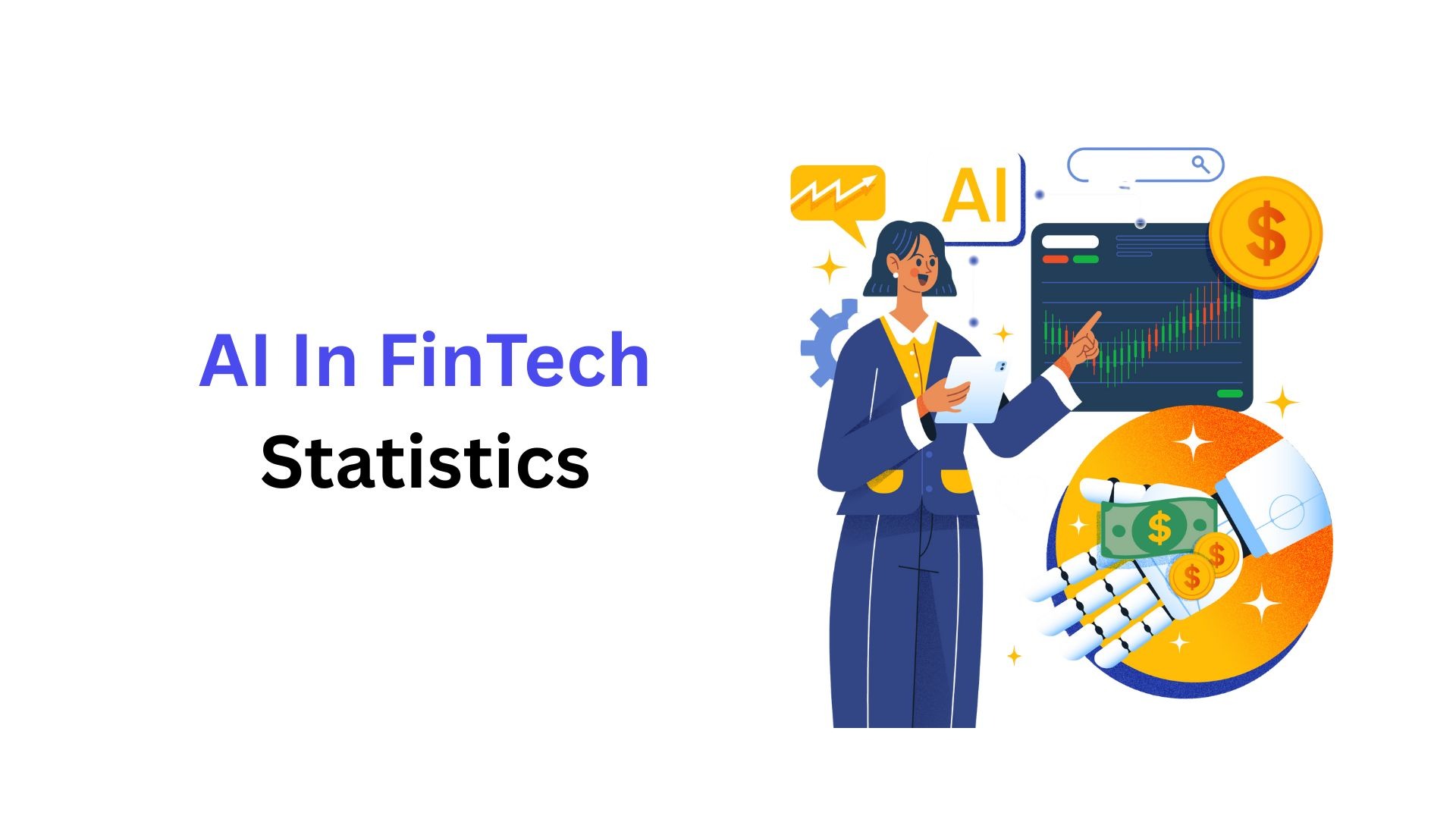AI In Retail Statistics By Market Research, Usage, Developments, Trends, Insights And Facts (2025)
Updated · Oct 30, 2025
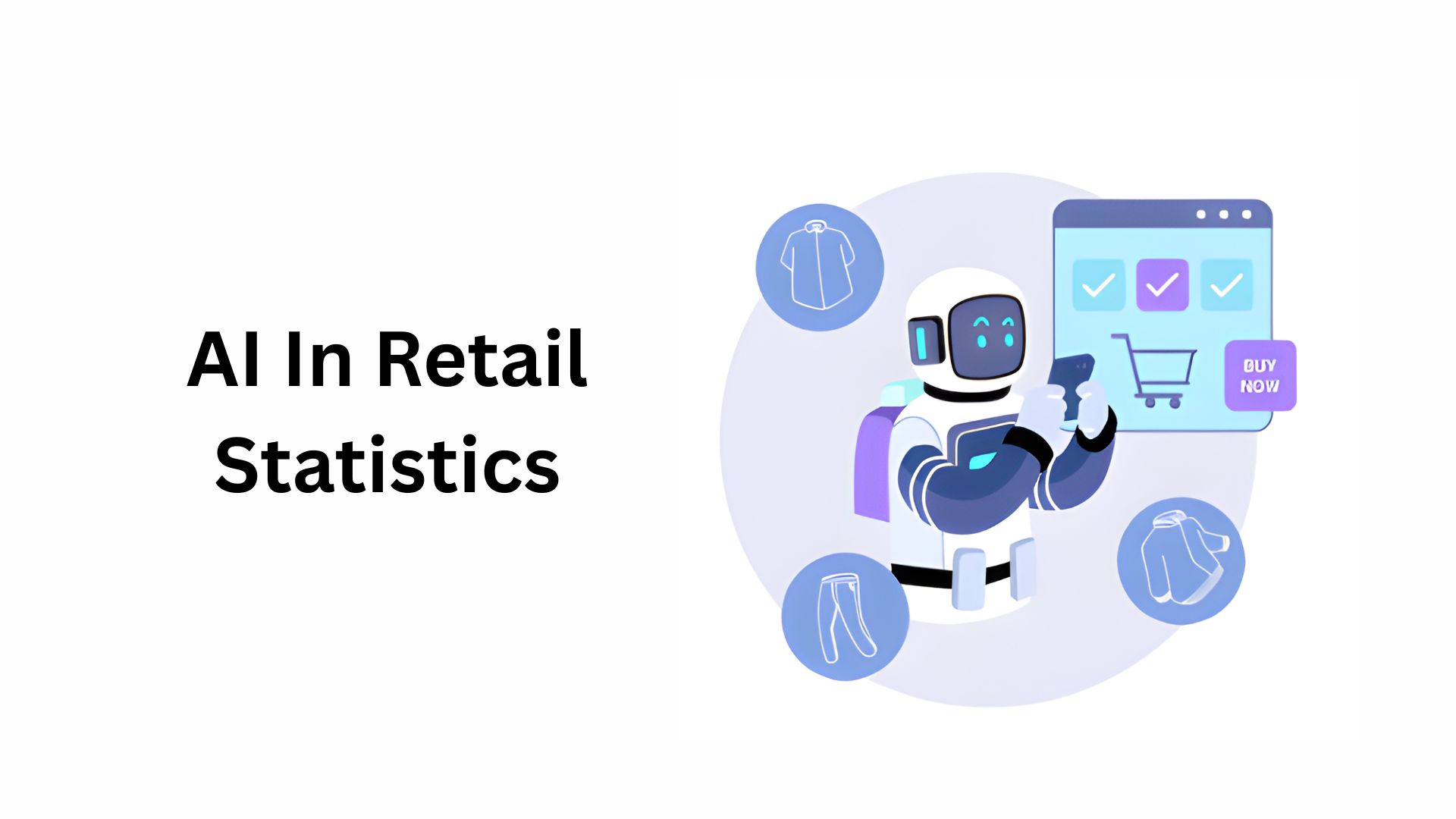
Table of Contents
- Introduction
- Editor’s Choice
- AI In the Retail Market Size
- AI In The Retail Market By Component
- AI In The Retail Market By Region
- Companies Use AI For Different Tasks In Retail
- The Effect of AI On Retail Efficiency
- Use of AI In Retail
- AI In Retail Usage By Pricing And Promotions
- AI In Retail Usage By Reasons
- Artificial Intelligence In Retail Usage: Business Benefits
- AI Hurdles In Retail
- Recent Developments
- Emerging Trends And The Future of AI In Retail
- Conclusion
Introduction
AI in Retail Statistics: AI has been accepted as a necessity in retail, and it is now an integral part of the customer journey. Throughout the period starting from when a consumer logs in to an app until a product is ready on the shelf, AI is involved, and it speeds up the decision-making process, reduces waste, and increases sales.
The year 2025 is expected to be the year when AI will leap from trial schemes to regular retail practices, thus increasing revenue, reducing costs, and altering the way retailers interact with consumers. Following is the rundown of the most significant AI in retail statistics for the year 2025 that is crystal clear and is backed by numbers.
Editor’s Choice
- The global AI in the retail sector was worth USD 11.83 billion in 2024, and it is predicted to grow at a rate of 18.14% per year to reach USD 62.64 billion in 2034.
- North America holds the largest share in the global AI in retail market, having over 40% share, followed by Europe (28%), Asia Pacific (23%), Latin America (6%), and MEA (3%).
- Among the companies surveyed, 48.9% employ AI for marketing automation, while 31% utilise it for chatbots, 29% for data analytics, and 21% for natural language processing applications.
- The use of AI has led to a reduction of operational inefficiencies to 60%, while 55% of back-office tasks have been automated, and logistics efficiency has been increased by 32%.
- The retailers employing AI in process optimisation have realised an average annual saving of USD 1.2 million.
- It is forecasted that by 2025, 95% of retailers will use AI in supply chains; 73% are already applying it or testing it for enhancing customer experience.
- Global AI in retail expenditure is anticipated to amount to USD 19 billion by 2027 (CAGR 34%).
- The revenue associated with AI in retail could surpass USD 5 trillion by 2030.
- By employing AI for price management, sales are lifted by 12% and the volume of unsold goods is cut down by 20%.
- Retail senior management is divided as follows: 59% intend to apply generative AI for customer service, and 49% for content marketing.
- The trend is that 87% of the retailers employ AI somewhere in their operations, while 60% have plans for investment increase.
- Customer behaviour understanding has been better through the use of predictive analytics, according to 62% of the best retailers.
- Data security and privacy have been pointed out as the main AI challenge by 44% of CEOs, while 53% of employees share the same concern.
- 43% of workers think that a lack of AI knowledge and skills is the main obstacle to adoption.
AI In the Retail Market Size
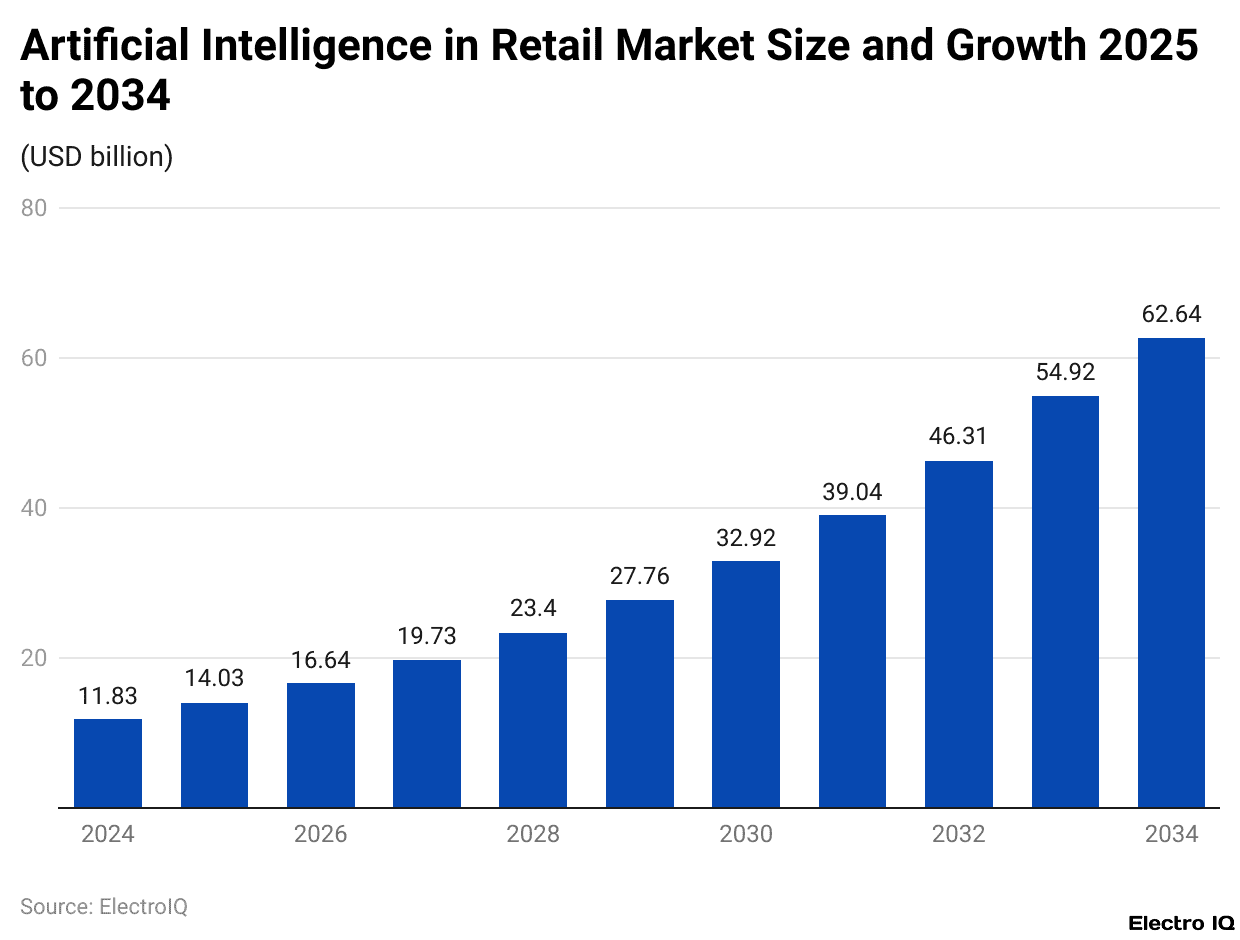
(Reference: precedenceresearch.com)
- The global market for artificial intelligence (AI) in retail is going to be huge, and the main reason is the technology transformation of the industry.
- In 2024, the market was worth around USD 11.83 billion and is expected to grow to about USD 62.64 billion by 2034.
- This means a high compound annual growth rate (CAGR) of 18.14% for the period 2025-2034.
- The surge is happening because of the increasing use of AI for personalising shopping, managing stocks, predicting demand, automating customer service, and many more.
- The future of AI in retail is very bright, and the market will grow a lot in the next ten years.
AI In The Retail Market By Component
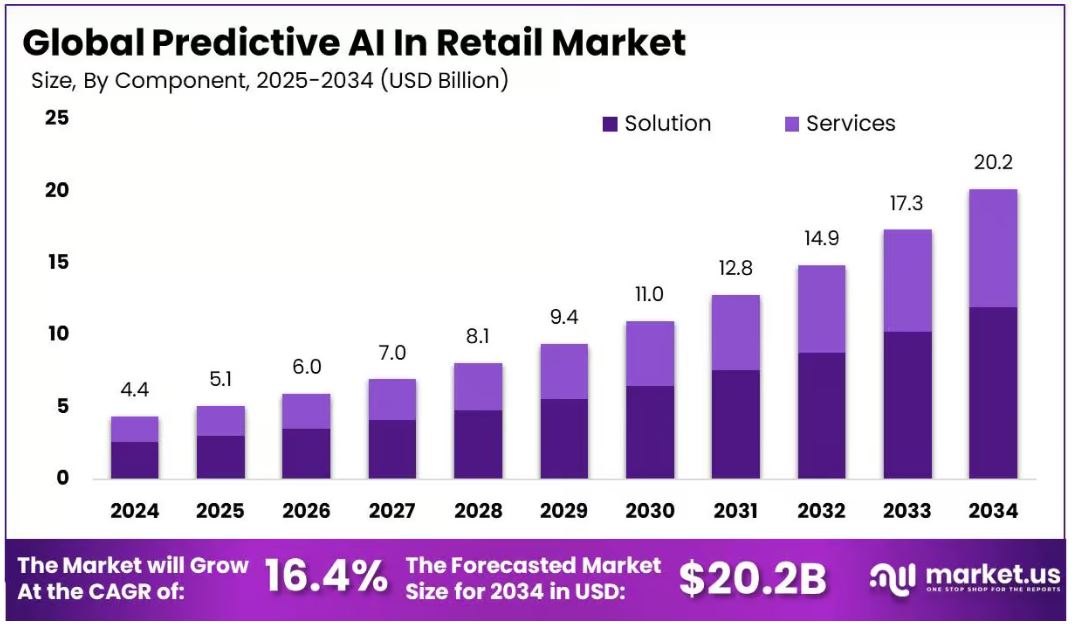
(Source: market.us)
- The global predictive AI in retail market size by component is going to experience strong growth for the next ten years.
- Initially valued at USD 4.42 billion in 2024, the market size is expected to be around USD 20.2 billion in 2034 with a CAGR (Compound Annual Growth Rate) of 16.4% from 2025 to 2034.
- The technology employs retailers to predict demand, optimise their operations, and provide personalised experiences to customers; hence, it is the major reason that the market is growing.
AI In The Retail Market By Region
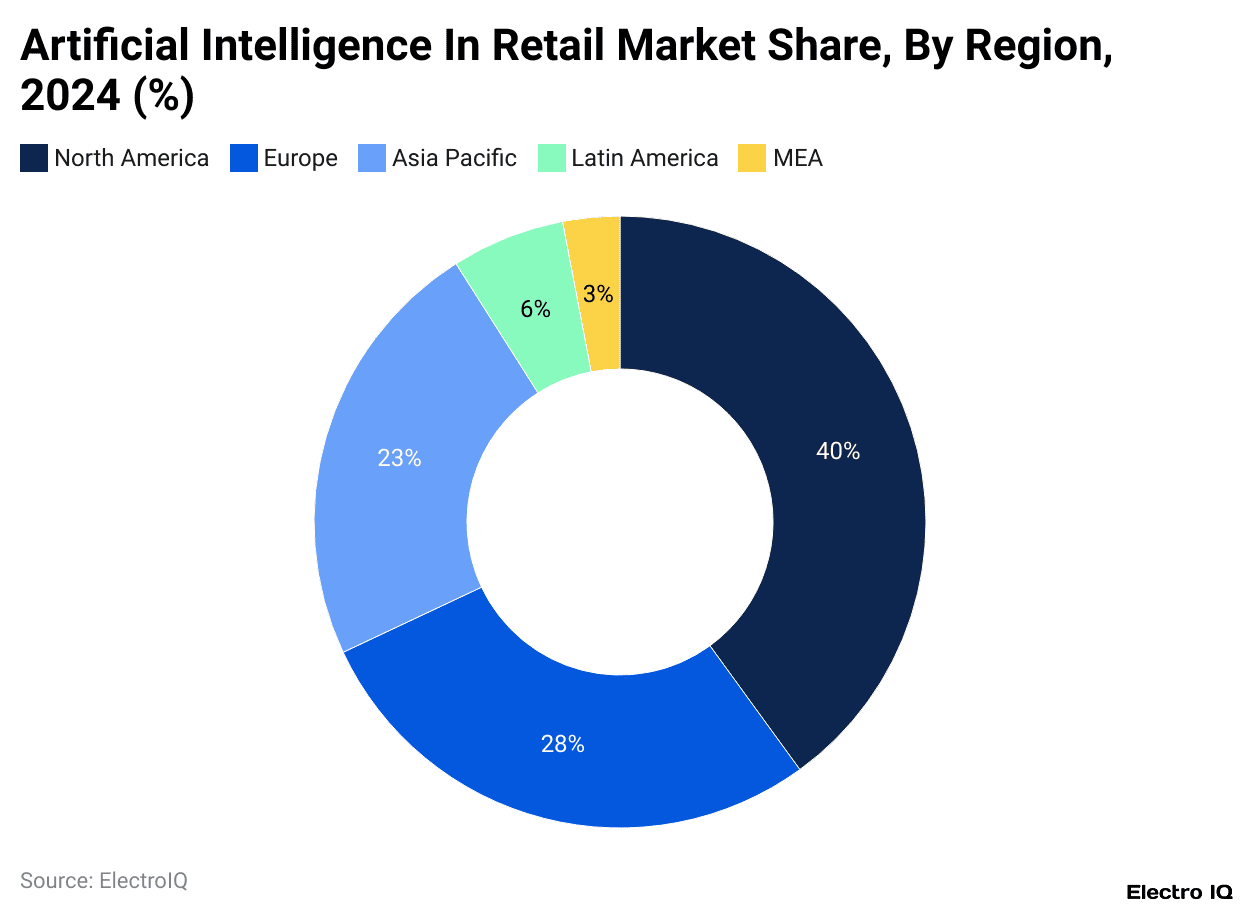
(Reference: precedenceresearch.com)
- North America was the leading region in the global Artificial Intelligence in retail market in 2024, with a share of more than 40% in the total revenue due to the early adoption of the technology and strong retail innovators.
- With 28% taking a supporting role, Europe made the second largest contribution in the global market of AI in retail, and this was in part due to the growing investments in AI-based analytics and automation.
- The Asia Pacific region was the one to have the 23% market share, reflecting the fast-paced digital transformation and developing retail markets in countries such as China, Japan, and India.
- Latin America was around 6% in terms of market share, and the Middle East and Africa (MEA) accounted for the remaining 3% which is showing gradual but steady growth as retailers in these areas begin using AI technologies.
Companies Use AI For Different Tasks In Retail
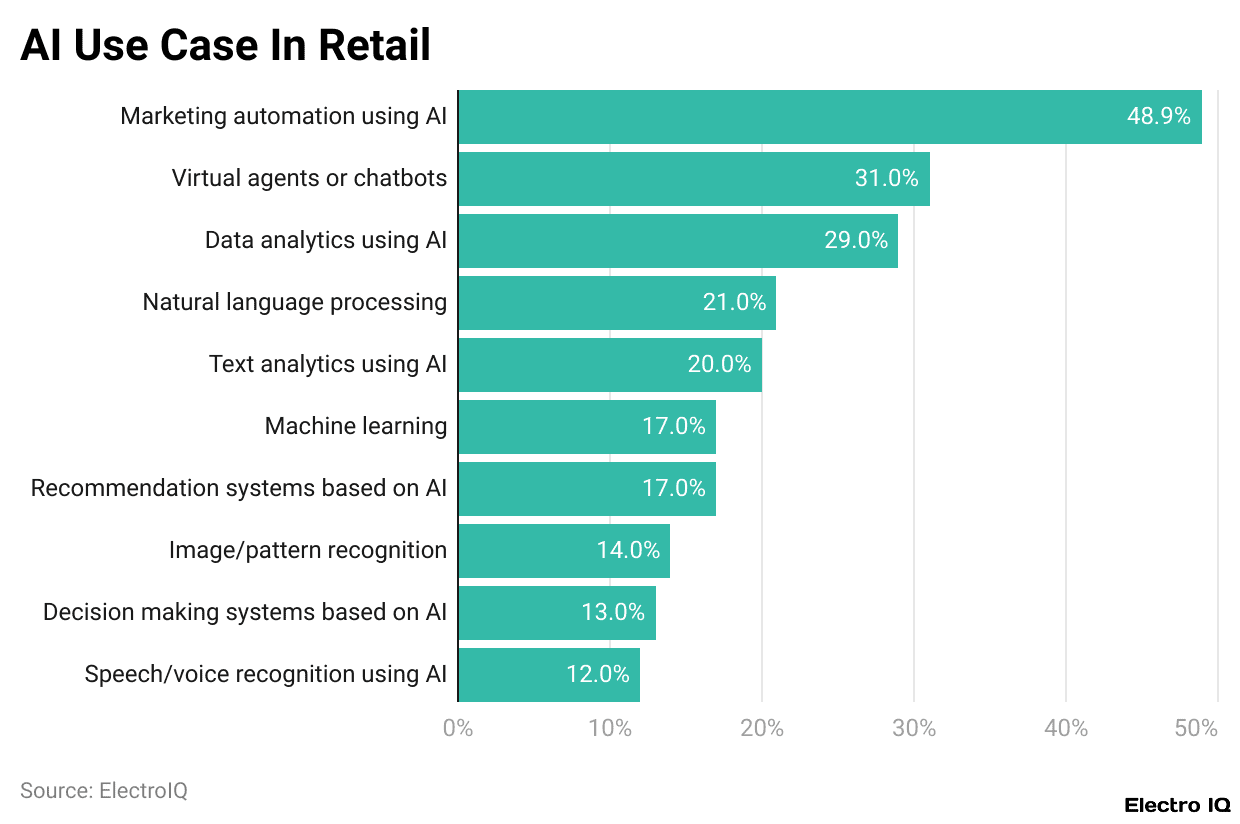
(Reference: demandsage.com)
- AI is widely used in the retail and e-commerce sectors across the board for different business operations, thus improving productivity as well as customers’ experience.
- Almost half of the respondents (48.9%) stated that they are employing AI in their marketing automation, which aids them in tailoring their campaigns and getting higher engagement levels.
- Around 31% use virtual assistants or chatbots for customer service and support, while 29% do AI-based data analytics for consumer behaviour insights.
- Natural language processing (21%) and text analytics (20%) are both applied by retailers to look into customers’ opinions through their feedback and reviews.
The Effect of AI On Retail Efficiency
- Retail operations have undergone a radical change through the application of artificial intelligence.
- The streamlining of operations through artificial intelligence has resulted in 40% of 40% retailers cutting down their operational inefficiencies and 55% of back-office tasks being automated, as per Gartner.
- The latter has directly caused logistics efficiency to go up by 32% while warehouse productivity has seen a 25% increase.
- AI also has a hand in predictive analytics, which has resulted in delivery times being 15% shorter and maintenance costs being reduced by 20%.
- Furthermore, tracking of vendor performance has been made easier for half of the retailers thanks to AI, while repetitive tasks have been reduced by 30%, thus creating time and energy saving opportunities.
- To this end, task prioritisation has become 28% more effective, and thus, the overall workflow is improved.
- A study conducted by Retail Dive indicates that retailers are able to save an apex of US$1.2 million every year because of AI-assisted process optimisation.
- Retail, on the other hand, is the one that benefits the most from AI in terms of smart layout alterations that increase foot traffic by 12% and make inventory auditing 40% faster.
Use of AI In Retail
- The acceptance of AI in the retail sector is increasing at a fast pace.
- It is forecasted that by 2025, almost 95% of retailers will be using AI in their supply chain management practices, while 73% will be either implementing or testing AI to enhance customer experiences.
- According to estimates, global AI spending in retail will reach US$19 billion by 2027, representing a compound annual growth rate (CAGR) of 34%.
- North America is the largest market with a 45% share, while 48% of retailers are putting their money on AI for the customer service sector.
- At present, AI-driven chatbots handle one-fourth of customer interactions, while 41% of retailers rely on AI for pricing that changes with demand.
- AI-generated revenue in the retail sector is forecasted to be more than US$5 trillion by 2030, which indicates its potential for revolutionising the sector.
AI In Retail Usage By Pricing And Promotions
- AI has been a game-changer in the retail industry when it comes to pricing and promotional strategies.
- The dynamic pricing model that is powered by AI has the potential to boost the overall sales revenue by a staggering 12%.
- Interestingly, 39% of retailers are currently employing AI for this purpose and are making real-time price adjustments.
- The accuracy level of the prediction done for the promotional effectiveness is as high as 95%, and out of the total number of retailers, 46% practitioners are using it for the purpose of fine-tuning discount offers.
- A study by Statista indicates that, compared to AI, a pricing technique based on conventional methods has led to the elimination of 20% of markdowns, along with the simultaneous enhancement of customer interaction by 15%.
- On the other hand, AI performs competitor price analysis at a rate that is 300% quicker than humans, resulting in a 10% uplift in gross margins.
- Furthermore, 42% of retail managers have started using AI to get the necessary information and analysis related to seasonal pricing, which in turn is helping them to lower the price-setting errors by 25% and also to increase the revenue predictability by 18%.
AI In Retail Usage By Reasons
- PR Newswire indicated that 59% of retail executives will be relying on generative AI to enhance customer service through less human involvement.
- Almost one-half (49%) of the people will be relying on it to enhance the speed of product categorisation as well as generate marketing content, whereas the other 44% will be utilising it to assist the creative teams in producing campaign visuals.
- Furthermore, 40% will be engaging the customers with AI in an interactive manner, while 38% will be relying on AI to automatically create internal knowledge bases from the data that already exists.
Artificial Intelligence In Retail Usage: Business Benefits
- AI has already been incorporated into the fabric of retail operations; 87% of retailers are using AI in at least one of their business areas.
- Approximately 60% are planning to increase their investment in AI, and by 2025, 80% of those in the C-suite regard AI-driven automation as their main tool for the efficiency process and for the satisfaction of customers.
- Research indicates that AI applications in the warehouse cut costs by 5-10% and administrative costs by as much as 40%.
- Predictive analytics, a feature of 62% of top retailers, has given rise to deeper insights into customer behaviour.
- In addition, AI is a major factor for 44% of companies using it for predictive analytics and 41% for customer segmentation; thus, the retail sector benefits from AI in terms of smarter and more data-driven strategies.
AI Hurdles In Retail
- A recent survey on retail firms in the United States indicated that the majority of companies experience significant problems during the application of AI technologies.
- Data security and privacy were pointed out by 44% of the CEOs as their major issue, thus drawing attention to the risks of handling sensitive customer data.
- That same concern was even more pronounced among the management and staff workers, with 53% considering it a major barrier to AI acceptance.
- 43% of the staff reported that the lack of awareness, understanding, and skill in handling AI applications is still a big hurdle.
- This tells us that while AI is a huge source of improving the workflow and becoming more creative, the usage of AI also needs more education, training, and data protection to be put in place.
Recent Developments
- Salesforce rolled out AI agents and a cloud-based POS system for retailers in January 2025, placing AI at the centre of its Retail Cloud.
- The new Modern POS system comes with features that allow businesses to control both online and in-store sales. It consists of omnichannel fulfilment, managing inventory, and mobile checkouts.
- In the meantime, Lenovo has also presented three retail solutions driven by AI, which are Retail Content Management Services for digital displays, and Retail Robotics with Yunji for automatic deliveries in hotels and shopping malls.
- Simultaneously, Microsoft signed a cooperation agreement with Rezolve AI to improve the digital engagement of retailers through Microsoft Cloud.
- The year 2022 marked a period when many important partnerships were established, and thus, the AI retail landscape was influenced significantly.
- Microsoft and Infosys joined forces to accelerate the implementation of customer experience solutions based on AI, whereas Google had a partnership with H&M to create a data infrastructure supported by AI.
- Oracle’s association with Komax was for the purpose of supporting retail operations in Latin America, and NVIDIA‘s friendship with Siemens was for the construction of an industrial metaverse powered by AI.
- Among the other significant changes were SAP’s purchase of Askdata to enhance AI-driven solutions and SAP’s partnership with Kyndryl to provide advanced digital transformation solutions.
- Besides, Microsoft’s acquisition of Nuance Communications was aimed at reinforcing its conversational AI, while Oracle‘s acquisition of Federos was for the improvement of AI-optimised network services.
Emerging Trends And The Future of AI In Retail
- The retail industry would be making a massive bet on AI since the market size was estimated to increase at an annual rate of 33% continuing during the period of 2024 to 2030.
- In 2028, 75% of retailers would be using AI in supply chain management, while in 2030, the whole retail sector would become 85% AI-dependent.
- The expansion of autonomous checkout systems is expected to reach 250% by 2027, while the yearly increase in AI-enabled visual search is estimated at 35%.
- AI-assisted virtual reality shopping might have up to 50 million customers by 2026.
- Furthermore, AI-enabled recommendation systems are predicted to account for 40% of the online shopping market by 2030.
- Retailers are also expecting to cut their operational costs by 28% and to attract 40% more customers with AI-based personalisation and loyalty programs.
- Seems to be a dream with a reduction in the retailers’ operational costs of 28% and a 40% increase in customer engagement through AI-based personalisation and loyalty programs.
Conclusion
AI in Retail Statistics: The retail industry is experiencing a thunderous change by AI, as it is the main player and thus the source of the main drivers of efficiency, personalisation, and growth. Retailers with an eye on the market and planning to grow through the next decade are already using the technology of AI for several purposes, such as supply chain optimisation, customer interaction enhancement, and profit margin increase.
On the other hand, there are still certain drawbacks like data privacy issues and a lack of a proficient workforce in AI, but the advantages—varying from real-time pricing to forecasting sales—are coming through and transforming all the segments of the retail operations. No doubt AI will be at the core of every retailer’s strategy that revolves around operation, competition, and customer relationship, going further, thus it will be a cornerstone where the future retail landscape is built.
FAQ.
The global AI in retail market was valued at approximately USD 11.83 billion in 2024 and is expected to reach around USD 62.64 billion by 2034, growing at a compound annual growth rate (CAGR) of 18.14%. This growth is fueled by retailers’ increasing use of AI technologies for personalised shopping experiences, demand forecasting, inventory management, and customer service automation.
North America currently dominates the global AI in retail market, accounting for over 40% of total revenue due to early adoption of advanced technologies and a robust retail ecosystem. Europe follows with 28%, driven by automation and data-driven retail investments.
AI has been the main factor contributing to the efficiency of retail operations and their cost reduction. With AI, retailers have been able to bring down operational inefficiencies by 40% and have also been able to perform 55% of the back-office tasks automatically. The logistics department has experienced a 32% boost in efficiency, and the use of predictive analytics has led to shorter delivery times and reduced maintenance costs.
One of the biggest challenges that the retail industry faces while adopting AI is that it has significant challenges. Approximately 44% of CEOs mentioned data security and privacy as their major issue, which signals the hazards associated with handling sensitive customer information. This worry is a lot more prevalent among the workers, 53% of whom see it as the primary obstacle.
AI is certain to be a critical component of retail at the conclusion of the decade. It is projected that by 2030, nearly 85% of retail functions will be AI-driven. Dominating trends include the development of self-service checkouts, AI-support for visual searching, and VR-assisted shopping.

Tajammul Pangarkar is the co-founder of a PR firm and the Chief Technology Officer at Prudour Research Firm. With a Bachelor of Engineering in Information Technology from Shivaji University, Tajammul brings over ten years of expertise in digital marketing to his roles. He excels at gathering and analyzing data, producing detailed statistics on various trending topics that help shape industry perspectives. Tajammul's deep-seated experience in mobile technology and industry research often shines through in his insightful analyses. He is keen on decoding tech trends, examining mobile applications, and enhancing general tech awareness. His writings frequently appear in numerous industry-specific magazines and forums, where he shares his knowledge and insights. When he's not immersed in technology, Tajammul enjoys playing table tennis. This hobby provides him with a refreshing break and allows him to engage in something he loves outside of his professional life. Whether he's analyzing data or serving a fast ball, Tajammul demonstrates dedication and passion in every endeavor.

